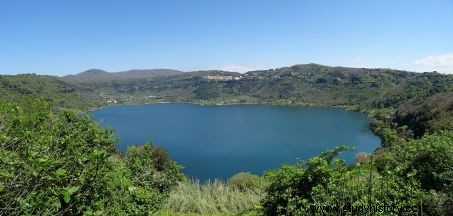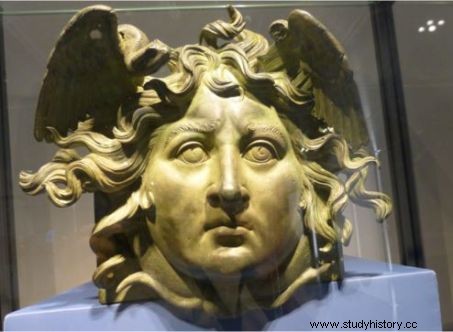Surveys carried out at the beginning of April in a lake near Rome seek to discover the possible presence of a third floating palace of the Emperor Caligula.

Extraction of one of Caligula's ships, in Lake Nemi in Italy in 1931.
The calm waters of Lake Nemi in Italy were suddenly stirred by a team of divers from the Carabinieri and civil protection which began intense underwater research on April 7, 2017. In this ancient volcanic crater located about thirty kilometers south-east of Rome, could indeed be the possible remains of a third Pleasure ship of the Roman Emperor Caligula of sinister memory.

18 th illustration century, of the Roman Emperor Gaius Julio Caesar Augusto Germanicus, better known as Caligula. © Mary Evans/Sipa
Let us recall that this young successor of Tiberius in the 1 st century, considered a psychopath, wanted – among other things – to make his horse Incitatus a consul and prostituted his sisters. During the very short span of his reign (approximately 3 years) from 37 to 41 CE, the "monster" as the Roman historian Suetonius called him, had also built incredible ships, considered as floating palaces, on which he celebrated, in a debauchery of wealth, parties and orgies. And it is precisely in the small body of water of 1.7km 2 of this peaceful seaside resort that an interdisciplinary group of about fifteen people is trying, as reported by the Spanish daily La Vanguardia, to detect a possible other of these wrecks thanks to the use of state-of-the-art equipment, including side-scan sonar*.

View of Lake Nemi, in Lazio, southeast of Rome. © Livioandronico2013.
If the research is focused on this place, it is because two of these ships have already been discovered there in the past. Between 1927 and 1933, one of the greatest underwater archeology operations ever conducted had indeed been undertaken under the impetus of Benito Mussolini, another megalomaniac:Lake Nemi had then been partially drained, revealing two wrecks of 67m x 19m for one and 71m x 24m for the other.
Film of the discovery of Caligula's second ship in Lake Nemi, in 1931. © YouTube/Pathé
In ancient times, these ships were decorated with mosaic floors, marbles and even a very sophisticated heating system! However, could a third ship still rest at the bottom of these waters? "Why not “, answers Matthew Nicholls, specialist in ancient history at the University of Reading, in Great Britain. Joined by Sciences et Avenir, the young British expert is following these explorations very closely:"I am waiting for the details of what they will find:it is worth going to see ". For centuries, explorations have regularly taken place in an attempt to reassemble these vestiges that rumor said was present under its waters. “They began in particular in 1535 with the dives under a very rudimentary kind of bell by Francesco Marchi [a shrewd military engineer]”, explains Alberto Bertucci, the mayor of Nemi, one of the promoters of the operation. In 1827, it was the turn of an Italian knight, Annesio Fusconi, to use a large diving bell. Before navy divers accurately recorded the location of these wrecks between 1896 and 1905, and they were then extracted from the bottom of the lake during the famous excavations of the early 20 th century. A resurrection which unfortunately did not last long since in 1944, during the Second World War, a fire destroyed the museum in which the two wrecks of the ships had been kept! The discovery of a third wreck would thus be excellent news for ancient history and archeology for which the loss of the first two is a real trauma.

Bronze Medusa head, from one of Caligula's ships that survived the 1944 fire. © Philippe Fleury/Univ. Caen
However, during his brief reign, Caligula benefited little from these extraordinary vessels. Faced with his incredible debauchery and countless crimes, members of his Praetorian Guard murdered him in 41, when he was only 29 years old! Thus perished he who had frequently in his mouth these words borrowed from a tragedy:"Let them hate me, provided they fear me .
* Side-scan sonar produces an acoustic image of the seabed with a width of 100m on each side.
Find out more: "Nemi's Navi », by Guido Ucelli, 1950.
